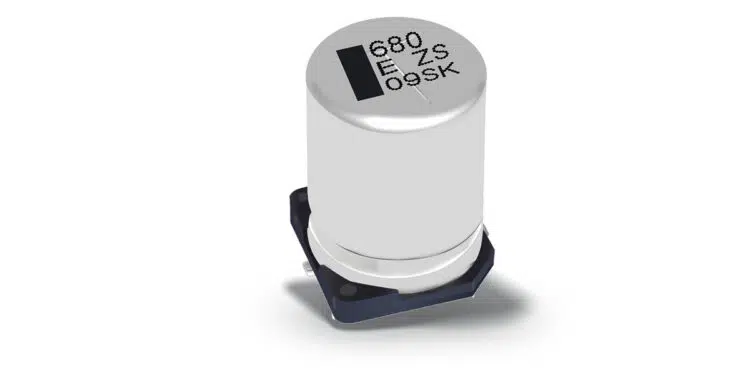Reliability, efficiency, performance, high vibration robustness and high ripple current – these are the top automotive engineering requirements in particular to the crucial components a modern car consists of.
And there is an increasing number of them, as the level of comfort, functionality and safety is increasing with every new car generation.
Acknowledging those prevalent industry trends, Panasonic Industry has developed its popular ZS series of Hybrid Capacitors with outstanding successors: When developing the ZU types (25~63V.DC at 8~12mΩ), the focus has been set to particularly reducing power dissipation – while the ZSU series (25~63V.DC, Capacitance 120~1000uF) comes with an almost unrivalled capacitance.
Yusuke Nagata from Panasonic Industry Europe summarizes: “ZU series is able to withstand ripple currents up to 53% better than its predecessor. For a diameter of 10 x 12.5mm with 25V.DC we achieve 5 Arms, for the 10 x 16.5mm equivalent 5.8 Arms. The ZSU series,” continues Nagata, “takes our capacitance specs for Hybrid Caps to an entirely new level: For a diameter of 10 x 12.5 mm with 25V.DC we achieve 680µF for the 10 x 16.5mm equivalent 1000µF.”
Next to this, ZU series stand out with a 4,000 hours temperature endurance at 135/125℃ – and thus one of the highest tolerance currently available in the industry.
Speaking of tough conditions “under the hood” or elsewhere in industrial environments, Panasonic Industry offers the new AEC-Q200 compliant types as vibration proof versions for 6mm diameter or above, withstanding shocks of as much as 30G.
So, ZU series suits wherever high Ripple current is essential, for example automotive 48V applications such as Integrated Starter Generators(ISG), DC/DC, oil pumps, water pumps or fan motors.
The ZSU series, however, is an option when it additionally comes to applications requiring next-gen capacitance – EPS, e-compressors, ADAS applications or as well oil-pumps and the like. “Components serving their functional purpose immaculately under severe automotive conditions are also often the perfect choice for other fields of applications”, points out Yusuke Nagata. And indeed: When looking at a suitable capacitor for base station power supply, industrial motor inverters or contemporary communication devices, both series definitely seem to be worth a closer look
































